
New!

Space Age Design
Midcentury Futuristic Atomic Googie Jet Age

Science Fiction
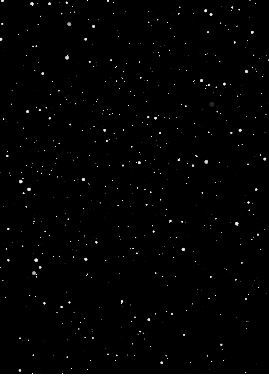
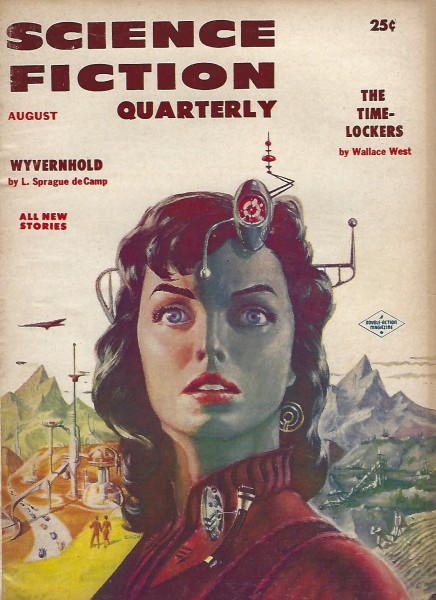
Images of the future driven by scientific and technological advances have been a part of our popular culture since the late 1800’s. Many of these images involved science fiction, including space travel, at the time considered the most advanced futuristic technology. It started with novels by foreign authors such as Jules Verne who in the mid-1800s wrote novels such as Journey to the Center of the Earth, From the Earth to the Moon, and Twenty Thousand Leagues Under the Sea. In 1885, H.G. Wells wrote The Time Machine. These were followed in the early 1900s by futuristic movies such as Un Voyage Dane La Lune in 1902, one of the first movies ever made, about voyage to the moon. In 1927 came the futuristic movie classic, Metropolis. World’s Fairs drew millions of visitors by showing the latest advances and images of what the future might look like.
Modern Sci-fi got its start in 1926 with the publishing of Amazing Stories, the first pulp magazine dedicated to science fiction. Many other magazines followed and by the late 1930s, there were numerous well known authors producing Sci-Fi books. These included Isaac Asimov, Ray Bradbury, Robert Heinlein, Arthur C. Clarke, L. Ron Hubbard, and many more. Things really started taking off after World War II exhibited the atom bomb and German rockets. The golden age of Sci-Fi was from around 1939 to 1959. As such much of it preceded and heavily influenced the Space Age (1954-1964). Sci-Fi had a big influence on the military, information technology, Hollywood, medical and science itself. The Golden Age started winding down in the late 1950s as many dedicated pulp magazines folded. The peak year was probably 1957 when at least 24 magazines published at least one title. The launch of Sputnik set off a space race that narrowed the gap between fantasy and reality. Advances in military weaponry, medicine, and computers further narrowed the gap.






August, 1956 issue of this mainstay Sci-Fi magazine of the 1950s.
In addition to the books and Sci-Fi dedicated pulp magazines, the hobby magazines such as Popular Science, Popular Mechanics and Mechanix Illustrated often had articles and cover illustrations of futuristic vehicles and products. These magazines put thought into implementing futuristic ideas. They were very popular during the Space Age and seemed to surge as the pure Sci-Fi magazines were fading. Their popularity indicate the future was getting closer.
Space Age design was bright angular and attention grabbing, but it was also often weird. That part appears to have come directly from Sci-Fi, specifically Sci-Fi art. The Sci-Fi artists are truly the unsung heroes of the genre. Most of them are unknown today.


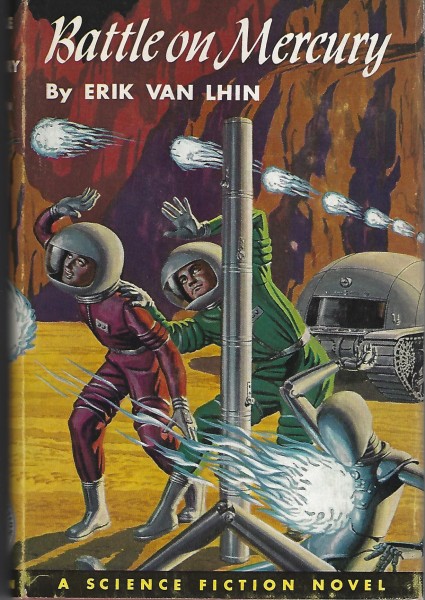
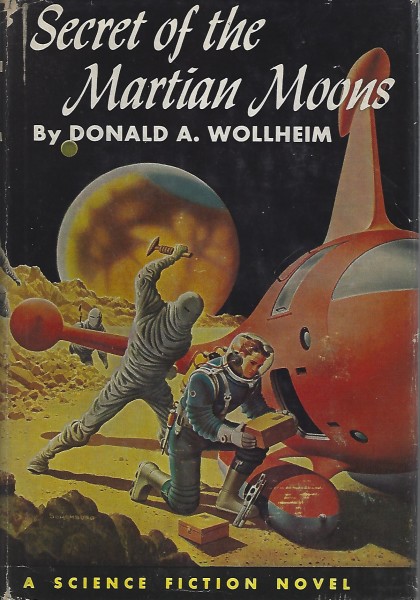
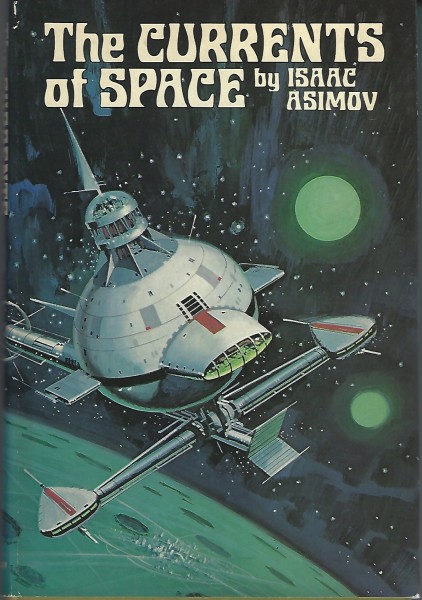




The Sci-Fi novels of the 1950s had colorful paper wrappers with imaginative and action packed scenes. Battle on Mercury by Eric Van Lhin first published in 1953, this one is dated 1958. Secret of the Martian Moons by Donald Wollheim first published in 1955, this one from 1957. The Current of Space by Isaac Asimov published in 1952, book club edition.









Yes, there were a lot of flying saucers in the 1950s, first in Sci-Fi and later in things like lamp shades. Son of the Stars by Raymond Jones first published 1952, this one from 1958. The Ant Men by Eric North first published 1955, this one from 1960. Planet of Light by Raymond Jones, originally published 1953, this one from 1958.
A list of pulp magazines dedicated to science fiction during or just before the Space Age is below


Amazing Stories 1926 – 2000, occasionally thereafter
Analog Science & Fact (fka Astounding Stories of
Super Science) 1930 – today
Authentic Science Fiction 1951-1957
Avon Fantasy Reader 1947-1952
Beyond Fantasy Fiction 1953-1955
Dynamic Science Fiction 1952-1954
Fantastic 1952-1980
Fantastic Story Quarterly 1950-1955
Fantastic Universe 1953-1960
Fantasy & Science Fiction (aka Space Age) 1949 - today
Future Fiction 1950-1960
Galaxy Science Fiction 1950-1980
If 1952-1974
Imagination 1950-1952
Imaginative Tales 1954-1958
Infinity Science Fiction 1955-1958
Nebula Science Fiction (Scottish) 1952-1959
Orbit Science Fiction 1953-1954
Satellite Science Fiction 1956-1959
Saturn 1957-1958
Science Fantasy 1950-1964
Science Fiction Plus 1953
Science Fiction Quarterly 1940-1943, 1951-1958
Science Fiction Stories 1955-1960
Space Journal – at least 1957 & 1958
Space Science Fiction 1957
Space Stories 1952-1953
Super Science-Fiction 1956-1959
Two Complete Science-Adventure Books 1950-1954
Urania (Italian) 1952-today
Venture Science Fiction 1957-1958, 1969-1970
Wonder Stories 1929-1955
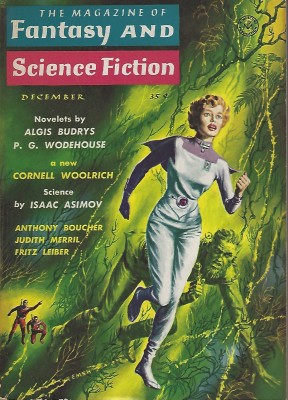
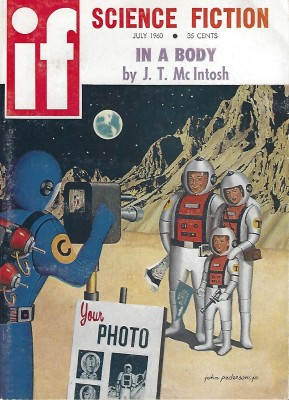




December, 1958. F&SF was one of the leading Sci-Fi magazines, with major authors and diverse content.
This long lived Sci-Fi magazine was considered second tier.







December, 1956. High speed trains in tunnels is being seriously discussed today.
March, 1960. This one never happened.
August, 1960. Popular Mechanics was the bible for nerds of the 1950s, and the top science magazine.










This is an oversized coloring book dated 1953.
A futuristic Wonder Woman in a prehistoric jungle.








The long running Analog from September, 1963.
These two ads an example of some earlier Sci-fi. They are by Bohn, an aluminum & brass company from Detroit. They had a whole series of futuristic predictions in ads in the mid-1940s.






From the Tom Swift series of teens books by Victor Appleton. This one dated 1956.